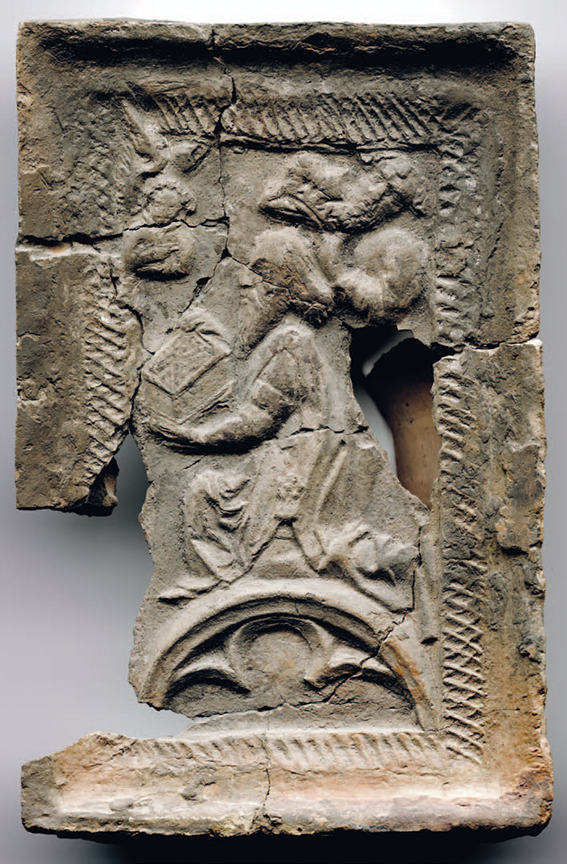Buildings nos. 55 and 56

The first documented record of building no. 55 dates from 1673, when it was owned by Mikuláš Mertich. Subsequent owners included the furrier Václav Brožek and Blažej Adamík, whose widow Barbora sold the house in 1760 to her son Josef, a master butcher. Subsequent owners were also tradespeople – the hatmaker Franz Hickel (the owner in 1793–1804), the clothmaker Cyril Frýdecký (1804–1812), the dyer Fridrich Patzer (1812–1813), and the brewer Florián Rotter (1820–1828). In this period the building had a single floor; an upper floor was added between 1820 and 1836. The house underwent a major reconstruction after being damaged by fire in 1887. Building no. 56 was also first documented in 1673, and it too was owned primarily by tradespeople – including the butcher Matouš Židek (1746–1749), the soap-maker Leopold Alscher (1749–1779), and the miller Cyril Neusser (1844–1847). It had two floors, with a masonry arcade and vaulted ceilings on both floors. The courtyard originally contained wooden outbuildings, but in 1873 these were replaced by a new structure with two floors and a cellar, which had two apartments on each floor; the entrance was on Pivovarská Street. After a fire in 1887, a new roof and chimneys were installed, but the building inspection discovered large cracks and fractures in the masonry and the vaults. The building contractor Klemens Hladisch recommended the complete demolition and rebuilding of the arcades and the front façade, the replacement of the vaulted ceilings of the upper floor with wooden ceilings, and the reinforcement of the perimeter walls with tie-rods and anchors. However, the owners’ financial situation meant that only the tie-rod reinforcements were carried out.
Interesting insights are provided by census data. In 1900, the eight living rooms in building no. 55 were inhabited by five families (30 people in total). The living room and kitchen on the ground floor (behind the inn) were a servant’s quarters. One upper-floor apartment (with two rooms and a kitchen) was the home of the owner David Grün and his wife, their four children, four maids, a cook and a waiter from the inn. The other upper-floor apartment was occupied by the cloth merchant Heinrich Hojda with his wife and their five children. A two-room apartment (without a kitchen) was home to the widow Bertha Teinerová, her four children and two maids, and a one-room apartment (with a kitchen) was occupied by the haberdasher Fanny Hirschová, her husband and a maid.

Dice and game counters are frequently found at urban archeological sites. In the Middle Ages these items were most frequently made from the bones of cattle. (Photograph Gabriela Čočková, National Heritage Authority – Ostrava branch, 2024)

A large number of tile fragments were found on parcel no. 55. One of the best-preserved examples is a rectangular tile with a depiction of a kneeling jester. This is a scene that formed part of a larger cycle depicting the Adoration of the Magi. These tiles have been dated to around the turn of the 16th century. Two X-ray images (in black and white) enable us to examine details that are less visible on photographs. (Photograph Zbyněk Moravec, Ostrava Museum, 2023).
Akce: Otevřít verzi pro tisk
